Part of a series of articles titled Northeast Coastal and Barrier Network Species Spotlight.
Article
Northeast Coastal and Barrier Network Species Spotlight: Atlantic Horseshoe Crab
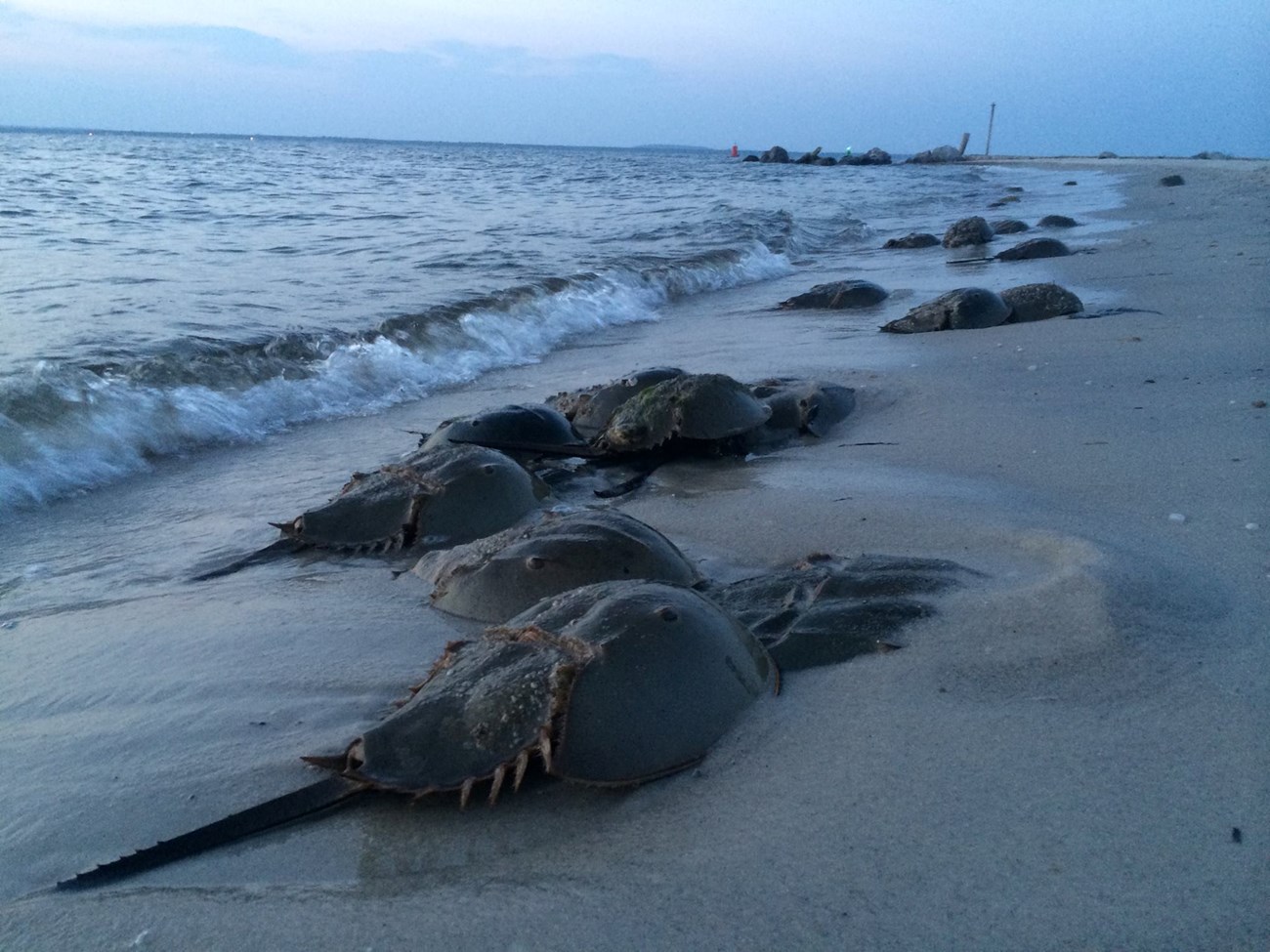
NPS (NPGallery)
“Living fossils”
The origins of the horseshoe crab predates the Triassic and age of the dinosaurs… to over 350 million years ago. Yes, 350 million. Since then, the horseshoe crab has crawled along the ocean floor in a form that closely resembles their ancestors from millions of years ago. For this reason, they are considered true “living fossils,” and they are all around us at Gateway National Recreation Area (GATE)!
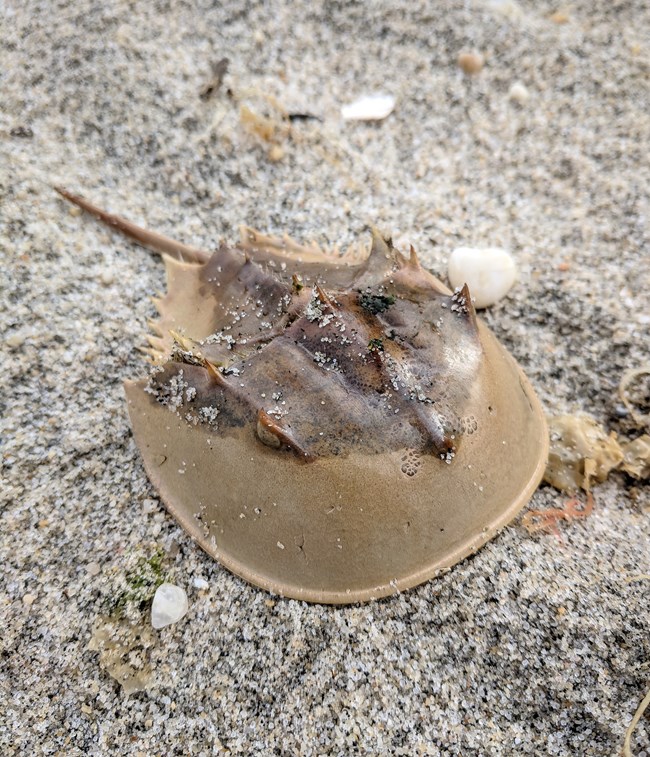
Robin Baranowski
What is it?
While the name suggests otherwise, the horseshoe crab isn’t really a crab at all. Both crabs and horseshoe crabs are arthropods, but a closer look reveals the truth. Horseshoe crabs are found under the subphyla Chelicerata, which makes them a closer relative to spiders and scorpions than any actual crab which are categorized as Crustacea.
The horseshoe crab gets its name from the U-shaped, “horseshoe” exoskeleton which protects it from predators such as sharks, loggerhead turtles, and seagulls. Under the exoskeleton, the crab’s body is segmented much like other arthropods. The prosoma (head) is where most organs are found. The head is where the mouth is located along with five pairs of legs. They also have a small pair of legs used to burrow into sediment. Also unique to the horseshoe crab is that they have a pair of pincers that are used solely for feeding, not defensive purposes. The abdomen contains five sets of “book” gills as well as muscles which aid in movement. On each side of the abdomen there are small spines which act as “spikes” for protection. Usually mistaken for a weapon, the telson (tail) of the horseshoe is harmless and used for navigation and balance. Another use of the tail is to flip the crab over if it ever finds itself flipped upside down along its travels.

Jolene Willis-Lujan
Female crabs are larger measuring about 18-19 inches from head to tail whereas males average 14-15 inches in length. At GATE, the subspecies of horseshoe crab seen is the Atlantic horseshoe crab (Limulus polyphemus). They can be found only along the east coast where they tend to stay in deeper waters for most of the year. They migrate to the shallows beginning in the spring to mate.
Their diet consists mostly of small mollusks, worms and seaweed the crab finds while rummaging around at the bottom of the sea. The horseshoe crab’s feeding pincers aid in grabbing food to eat. Since the crab does not have a set of teeth, each leg has small spines that pulverize and crush food before it reaches a set of small appendages that shovel the food into the mouth.
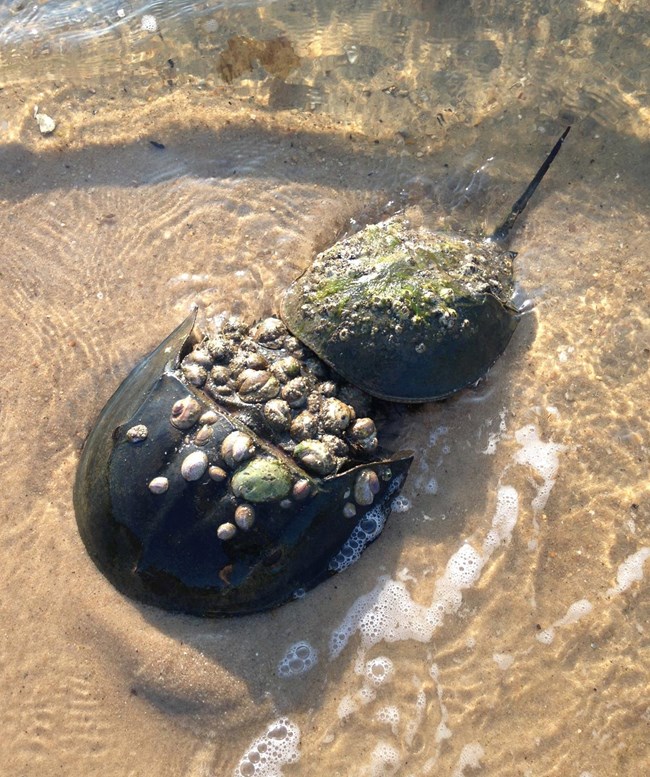
NPS (NPGallery)
Out for blood
Copper-based and equipped with special blood-clotting capabilities, horseshoe crab blood cells come in very high demand. The blood contains an amebocyte that has been extracted by scientists to create a special agent known as Limulus Amebocyte Lysate (LAL). When a horseshoe crab is injured the amebocytes surround pathogens and form a clot. The same happens when used in the lab to test medical tools, vaccinations and implants for bacteria that is harmful to humans. To provide laboratories with LAL, the blood first needs to be extracted from the horseshoe crab. Horseshoe crabs are harvested and a small amount of their blood is removed, similar to a human blood donation. They are then returned to the beach they were taken from within 24 hours. Researchers in Japan have created a synthetic alternative to using horseshoe crab blood, and it is commonly used in other countries. Since the alternative is not yet FDA-approved, there is not yet an alternative in the United States, the medical industry is indeed out for the crab’s blood because of this unique clotting agent, LAL.
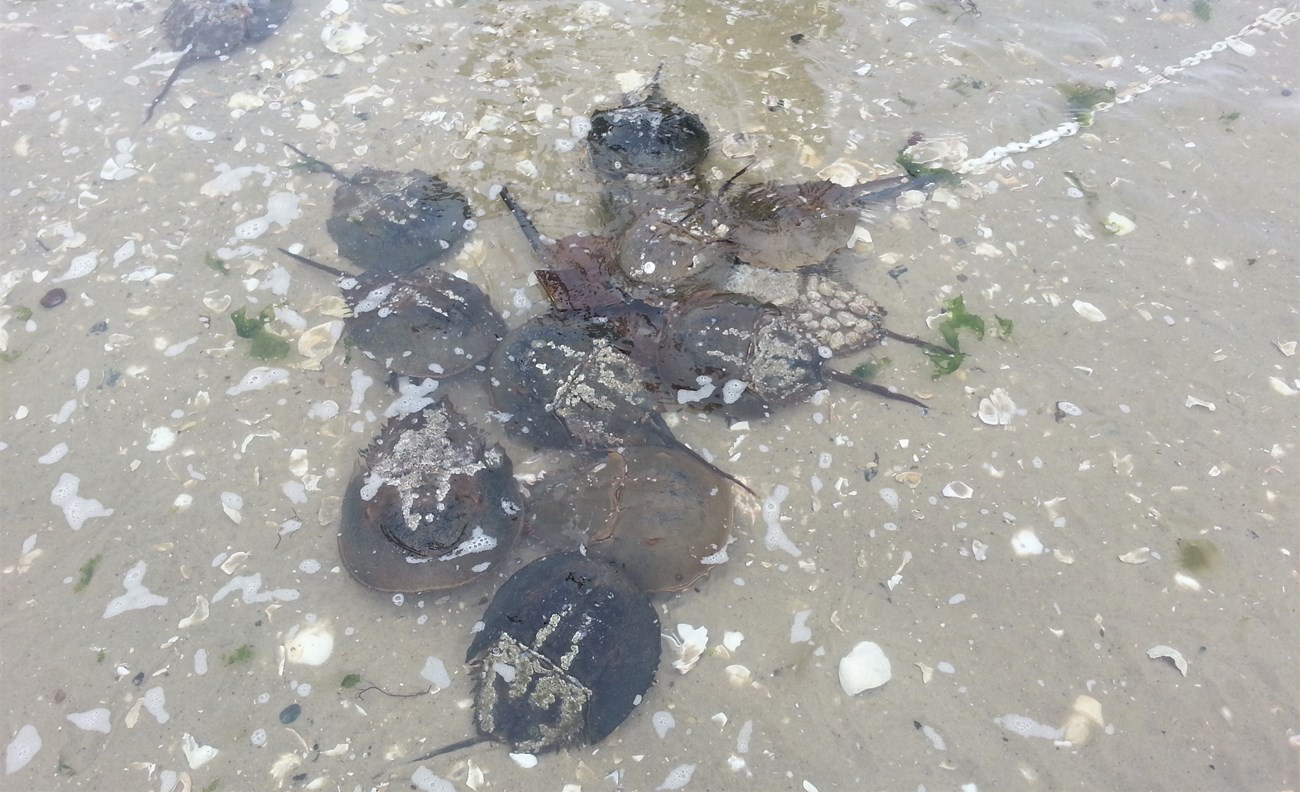
Jolene Willis-Lujan
“Horseshoe crab central” at Gateway
May through July, the sandy beaches of Jamaica Bay’s islands and the surrounding coastline of GATE serve as ideal breeding grounds for horseshoe crabs. Guided by the new and full moonlight, these crabs come from the depths into the shallow bays of summer high tides in droves to breed. At GATE’s own Plumb Beach, approximately 3,000 horseshoe crabs will come to lay their eggs. With the male attached to her back a female will dig into the sand and lay between 20,000-30,000 eggs at a time. Over an entire season, horseshoe crabs can lay up to an astounding 90,000 eggs.
Population levels of the horseshoe crab are heavily dependent upon the availability of suitable habitat for spawning. With sea level rise, and specifically the hardening of the Jamaica Bay shoreline, a realistic threat to coastal areas, the main breeding ground at GATE may be in jeopardy. A loss of sandy beach habitats would make it difficult for horseshoe crabs to breed successfully. Horseshoe crabs are also subject to overharvesting from the fishing industry where they are used as bait. This along with a loss of spawning habitat has put a strain on population numbers in the Atlantic region.
Horseshoe crabs are an integral part of GATE’s ecosystem. Not only does laying eggs on the shores of Jamaica Bay help sustain their own population, but migratory shorebirds at GATE also rely on the protein rich eggs for a large part of their diet. Juvenile fish also depend on recently hatched crabs for food.
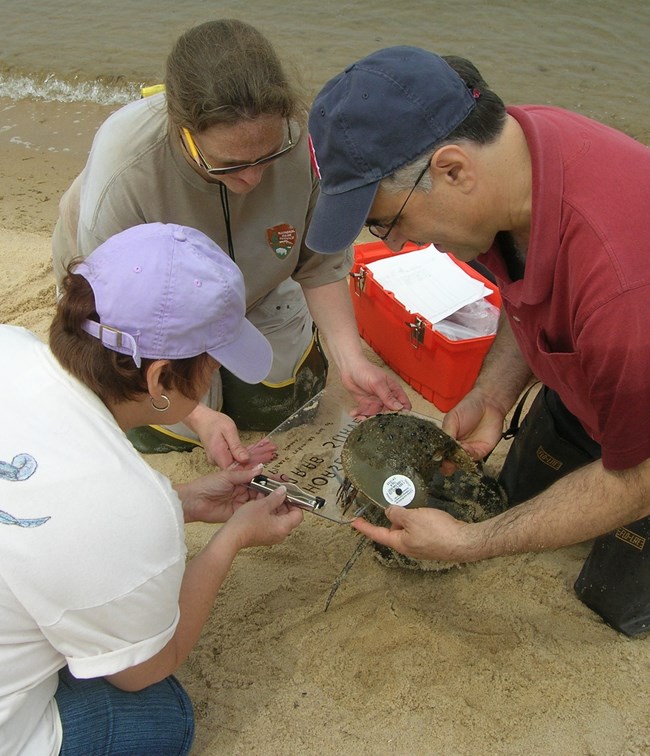
NPS (NPGallery)
Monitoring, education & outreach
Every spring, GATE and Cornell University partner to organize horseshoe crab spawning surveys at multiple beaches across the park. These surveys are conducted annually where volunteer citizen scientists from the community come together and survey multiple areas across the park in search of horseshoe crabs coming ashore to spawn. In coordination with Fish and Wildlife Service (FWS), some horseshoe crabs are tagged with a small white button tag. When these are found by the public the information is sent to FWS and a database keeps track of where the crabs were tagged and where they have been found. The public who sends in the information will receive a certificate telling them when and where their crab was tagged and where they found it. These monitoring efforts help the park and FWS gain a better understanding of horseshoe crabs and how to ensure the future well-being of their population and all organisms that rely on them at GATE. Involving volunteers also provides science education, allowing the public to gain an appreciation for the natural world and in particular, Gateway’s horseshoe crab population.
Written by Edward Cascella, Geoscientists-in-the-Parks (GIP) Intern
Last updated: December 11, 2019
